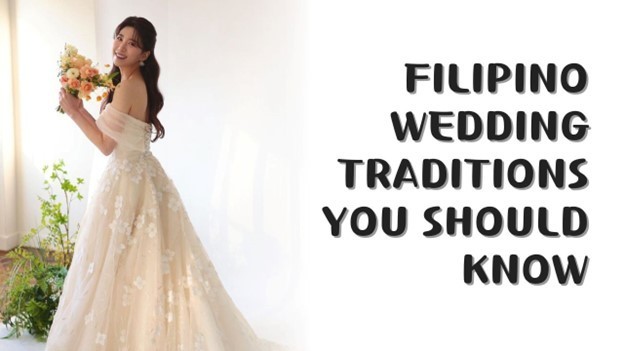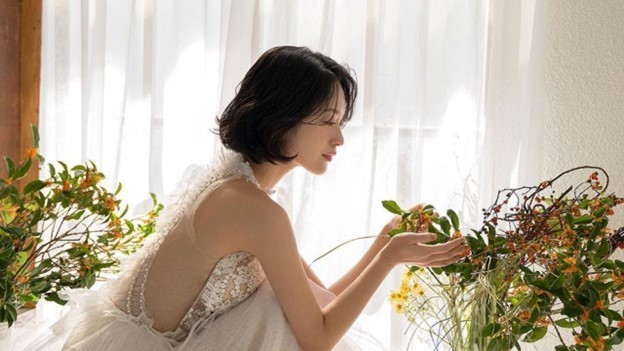views

Filipino weddings are an impressive fusion of modern and historical customs. Rooted in a vibrant blend of indigenous, Spanish, and American influences, Filipino wedding traditions are celebrations of love, family, and community. Each element is significant, making the union a unique and culturally enriching experience. Prepare to be captivated by the warmth and joy of a Filipino wedding. To help you understand what happens at a Filipino wedding, we're exploring what Filipino weddings are typically like and how old traditions have changed over time.
Are weddings important in Filipino society?
In Filipino society, weddings hold immense cultural and social significance, transcending mere celebrations of love. Weddings are pivotal rites of passage. It symbolizes the union of Filipina brides and grooms and the merging of families and communities.
Moreover, Filipino weddings are avenues for displaying social status. Lavish celebrations, though not obligatory, are common, reflecting familial prosperity and contributing to a couple's societal standing. The practice of "sabong" or competitive gifting during weddings, emphasizes reciprocity and mutual support within the community.
In essence, weddings in Filipino society are more than personal milestones; they are communal events that reinforce cultural identity, strengthen social bonds, and affirm the interconnectedness of individuals within the broader fabric of Filipino life.
Filipino wedding traditions
In Filipino weddings, the veil and cord ritual is a recognizable tradition, but historically, formal rituals like official courtship were more common. There is a modernization of Filipino weddings, especially for those abroad. While some still incorporate historical elements, many prefer non-church weddings, blending Western and Filipino traditions. Despite non-traditional choices, modern couples often cherish certain traditions, adding uniqueness to their weddings. Exploring the evolution of historic practices provides insight into what to expect at contemporary Filipino weddings.
Celebration of engagement
In the past, formal courtship and engagement, known as Panliligaw and Pamamanhikan in Tagalog, were integral steps in a traditional Filipino wedding. However, in contemporary Filipino weddings, these pre-wedding customs have evolved into a more informal celebration of the upcoming union between families. While Pamamanhikan might still be observed, especially in rural areas, modern urban couples in the Philippines, the United States, and elsewhere have transformed this tradition into a festive family engagement celebration. The Filipino wedding tradition has shifted from a formal introduction to a lively engagement celebration, reflecting the changing dynamics of Filipino wedding customs.
Naming godparents
Historically, a wedding in the Philippines included naming sponsors, particularly for the candle, veil, and cord, who financially contributed to the wedding expenses. However, this practice has diminished. Naming sponsors for these specific elements was a way to acknowledge individuals or couples who financially supported parts of the wedding. While this tradition has waned, it remains common to name Ninongs and Ninangs (godfathers and godmothers) as integral members of a couple's wedding party, emphasizing the enduring significance of these honorary roles in Philippine wedding celebrations.

Parental blessings
The parental blessing remains a significant tradition in a modern wedding in the Philippines, emphasizing the importance of honoring elders and parents on the wedding day. Typically integrated into the ceremony, this tradition involves bestowing blessings and granting seats of honor to parents. Seeking parental approval during the nuptials signifies acceptance of one's chosen partner and demonstrates respect for parents. Traditionally conveyed through "mano" or raising parents' hands to one's forehead, it has evolved into a hug or kiss, symbolizing the emotional moment before the couple is united in marriage.
13 coins
Filipino wedding ceremony has a tradition called "arras," involving the exchange of 13 coins. The arras symbolizes provision, traditionally passed from the groom to the bride, representing prosperity and a pledge to provide for each other. While historically a one-way exchange, it has evolved. Nowadays, the groom passes the coins to the bride and receives them back, symbolizing mutual commitment to providing for each other. Typically, a coin bearer, akin to a ring bearer, brings forth these coins during the ceremony, adding a symbolic touch to the couple's commitment.
Traditional Filipino wedding attire
Grooms in Filipino weddings commonly don the Barong Tagalog, featuring an embroidered sheer long-sleeve shirt paired with slacks. While Baro't Saya historically adorned Filipino brides with dramatic puffy sleeves, modern brides often opt for Westernized wedding dresses. It's considered bad luck for the bride to try on her wedding dress before the wedding. This belief adds an element of caution and mystery to the preparations, emphasizing the significance and anticipation surrounding the bride's attire on a special day.
Filipino wedding superstitions
In addition to the superstition about brides trying on their wedding dresses, there are several other Filipino wedding superstitions. Getting married in the same year as a sibling is considered bad luck. If the unity candle extinguishes, the person closest to it is believed to die. Gifting knives or sharp objects is discouraged, symbolizing potential quarrels or bad luck. Rain on the wedding day is seen as a sign of prosperity. Lastly, dropping the ring, veil, cord, or arras is avoided, as it's thought to symbolize a wedding marred by misfortune.
Evolution and modern trends
Newlyweds followed old wedding Philippine customs previously, but things have changed. Nowadays, young couples want a mix of tradition and style for their weddings. They might choose trendy places, like beautiful destinations or modern venues, and get creative with themes. Taking lots of pictures before the wedding, having engagement parties, and throwing big receptions have become normal too. These new trends show how Filipino culture can change and include new ideas while keeping its important values intact.
Conclusion
To summarize, marriage in the Philippines is like a colorful quilt made from history, culture, and religion. It includes old ways, things from when the country was colonized, and new ideas. This mix shows how Filipinos have changed while keeping important values like family, unity, and commitment. People there think that wedding traditions can stay strong in their roots while it is important to be open to new things.





















Comments
0 comment